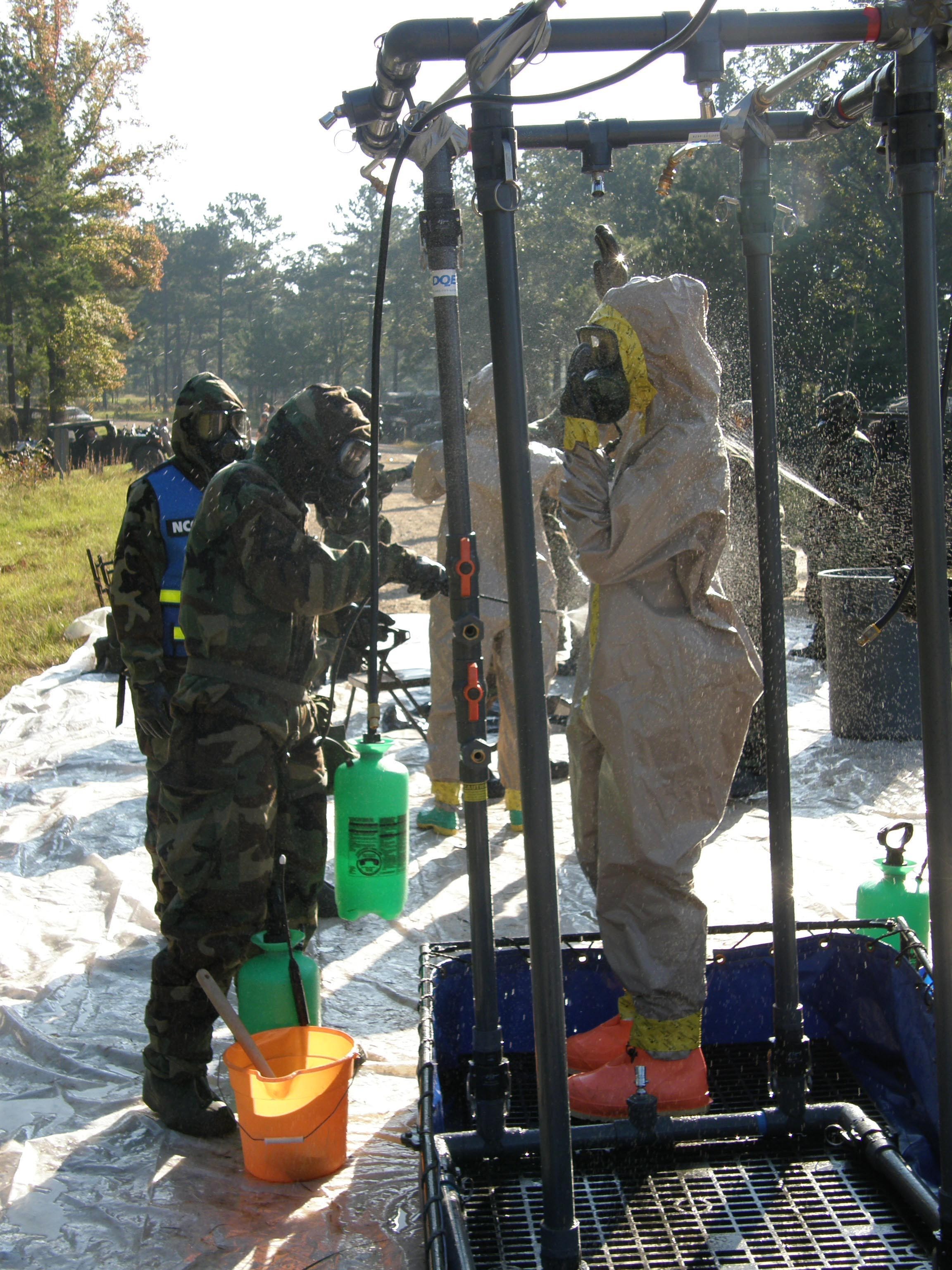As the Army transforms, unit missions change and responsibility for certain tasks transfer to smaller elements. Fort Polk, Louisiana's 51st Chemical Company, 83rd Chemical Battalion, is no exception. The company's traditional mission is decontamination, but on Oct. 21-23, it conducted field training on a new mission. "We continue to evolve as a conventional chemical, biological, radiological, nuclear and explosives organization," said Maj. Sean Crockett, operations officer for the 83rd. "We're trying to grow a site assessment capability for weapons of mass destruction type sites."
When Soldiers find a suspected WMD site on the battlefield, the current procedure is to call in the Chemical, Biological, Radiological, Nuclear and Explosives Response Team to assess the site, take samples and gather intelligence. The Chemical Corps is exploring the possibility of delegating some of the initial site assessment tasks to other chemical units like the 51st. "CBRN-E Response Teams are a limited asset," said Crockett. "What we're trying to do is get more forces that have a capability to determine if there is in fact a threat."
The company's newly organized Hazardous Materials Response and Decontamination Team practiced their skills during the exercise, which involved three simulated WMD production facilities. Science Applications International Corporation, a civilian contract company, developed the training and assisted in oversight and evaluation of the exercise. Also training alongside the 51st was a CBRN-E Response Team from the 22nd Chemical Battalion.
"The HRD Team's mission is to characterize the site," said Crockett. "Their goal is to go in and take photographs, determine ingress and egress routes to the facility and locate the rooms that the CBRN-E Response Team needs to focus on. They egress the site, go through decon, and debrief with the CBRN-E Response Team. The team can then go in with exactly the tools they need. They know which building they need to hit and what rooms they need to go to. It limits the time they spend at the target and helps them focus their efforts."
On the first mission, the 51st Soldiers made an initial identification with their detection systems and determined that they had found a G-series nerve agent. They took liquid and solid samples and grabbed documents and some protective gear that was in the room. Those items "are all indicators of a potential production capability," said Crockett. The team then evacuated the items to an in-theater lab, which was simulated for the exercise.
All of the information obtained by the HRD Team and the CBRN-E Response Team is ultimately intended for the use of the local Army commander (also known as a "battle-space owner"), usually a brigade combat team commander.
For this exercise, the local command element was simulated. "In the exercises we've done so far, the one huge piece we're missing is the relationship we have with the battle-space owner," said Crockett. "When we send assets into his battle space, we're working for him. We hope to actually get the maneuver commanders involved in this process. We're focused on mastering our battle tasks though, so we can get our stuff right."
Before the field exercise, the 51st spent several days training on their new equipment and tasks. They also learned how to identify different types of facilities. This effort is brand new -- prior to this training, the HRD concept had not been validated. "We had to start from nothing," said Capt. Jacy Park, 51st commander. "(But) we have come up with effective training procedures."
Park's initial assessment of the concept's viability was favorable.
"Having the HRD within the company gives me the capability to go cradle to grave on a mission," she said. "The local CBRN-E Response Team might be busy somewhere else on the battlefield, and in order to give the battle-space owner a quick answer, he can send an HRD Team in. They'll have enough expertise to determine if it's a false alarm or if the CBRN-E Response Team is actually needed."
Park was impressed with the team during training. "They were flexible in working with us. Sometimes in a training exercise like this, the more knowledgeable unit will come in and try to take over the mission. They didn't do that. They were part of the team."
First Lt. Travis Cox led the HRD Team. "It was good training," he said. "Given that we were taking on a new mission, I think we were successful. The Soldiers sounded confident and excited about it, too. It was a good change of pace." Cox noted that the contractors implementing the training were also encouraging. "The civilians were helpful," he said. "A few of the teachers said they would trust us to go out on a real world mission."
Park echoed Cox's assessment. "Our guys have exceeded my expectations," she said.


Social Sharing